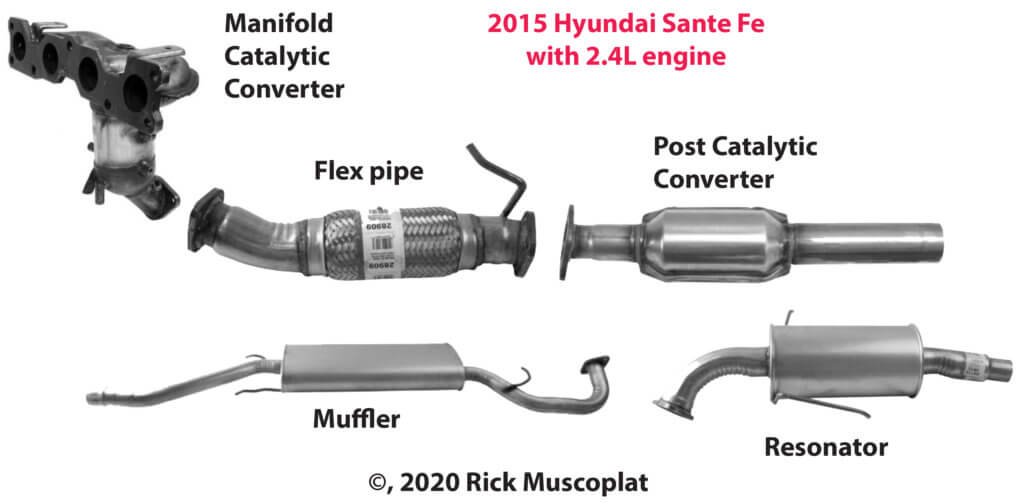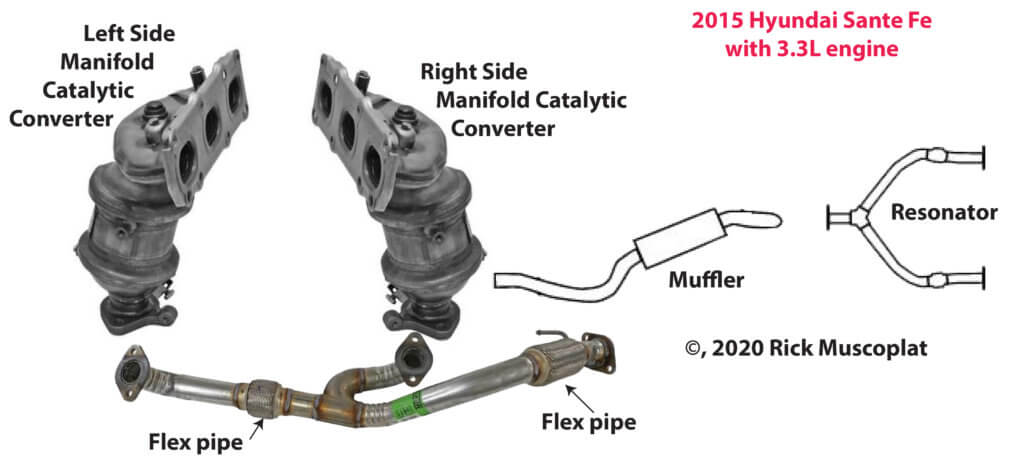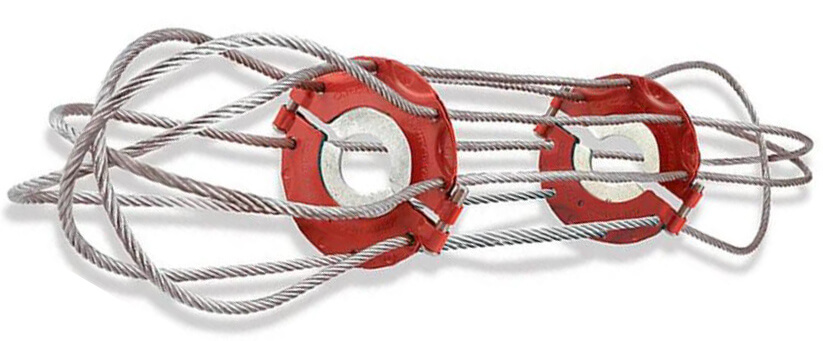Manifold catalytic converter versus post catalytic converter
Understanding a Manifold Catalytic Converter
A manifold catalytic converter takes the place of a typical exhaust manifold. It incorporates a small catalytic converter to treat the exhaust. Depending on the year, make, model, and engine configuration, the vehicle can have a single manifold catalytic converter for a 4-cylinder engine or a manifold catalytic converter for each bank of a V-style engine.

Exhaust setup for a 2015 Hyundai Sante Fe Sport with 4-cylinder engine

Exhaust setup for the 2015 Hyundai Sante Fe with a 3.3L V-6 engine
In addition to the manifold converters, the vehicle/engine configuration may or may not have one or more post catalytic converters.
Why carmakers use a manifold catalytic converter
A catalytic converter must reach a minimum temperature in the ~600°F range to effectively start treating exhaust gases.
By placing a catalytic converter right at the exhaust ports, the manifold catalytic converter can “light off” (reach operating temperature) more quickly since the hot exhaust gas immediately heats up the catalytic converter core.
A quick light off is especially important on cold starts where the engine is fed a rich fuel mixture that needs to be treated more aggressively in the catalytic converter.
Since the catalytic conversion process generates heat the exhaust gas leaves the manifold converter hotter than it came in. If the carmaker includes a secondary post catalytic converter, the hotter exhaust gas helps that unit light off faster.
Why didn’t the old system work?
The problem with the older system where the catalytic converter sits under the vehicle is that the exhaust would cool too much in cold weather, taking much longer for the underside converter to light off. That caused increased emissions on cold starts in cold weather.
If it has a Manifold Catalytic Converter why does it need another one downstream?
Some carmakers use one or more manifold catalytic converters along with another one farther down in the exhaust. It all depends on the emissions standards the car was built for. (CA or federal). A second one is needed in some cases because the manifold converter is so small, it can’t handle all the exhaust clean up.
Do thieves steal manifold catalytic converters?
Generally not. They’re easier to access since they’re often out in the open under the hood. But cutting through the thick manifold is far more difficult. Plus, in many cases, the manifold catalytic converter contains less precious metal, making it less valuable at the recycling center. In other words, it’s too much work for too little reward.
Protect the post catalytic converter against catalytic converter theft with a Cat Cage
Since the post catalytic converter is the most vulnerable, you should protect it with a customer welded cage or a commercially available Cat Cage

CatClamp uses hardened steel clamps and heavy duty aircraft cables to surround the catalytic converter.
©, 2020 Rick Muscoplat
Posted on by Rick Muscoplat